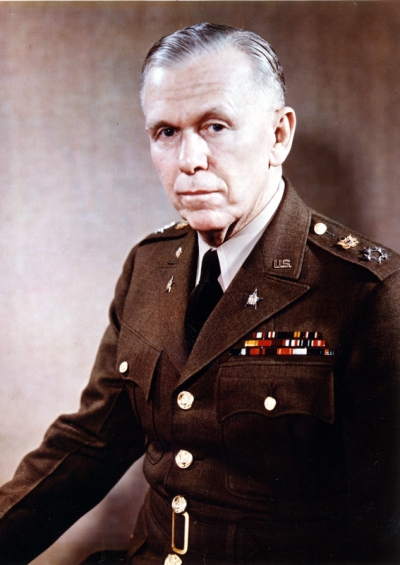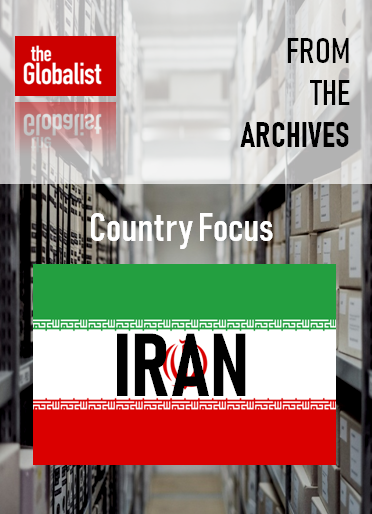COVID 19 and the Marshall Plan Illusion
Why the Marshall Plan would be turned down by today’s European leaders.
April 22, 2020

If there is one ready-made, off-the-shelf cliché politicians like to invoke in the current crisis, it is the need for a new Marshall Plan to help Europe overcome the economic impact of coronavirus lockdowns.
EU Commission President Ursula von der Leyen, Italy’s prime minister Giuseppe Conte and Spanish prime minister Pedro Sanchez are among the political leaders who have called for a modern-day version of the Marshall Plan.
EU Commissioner Thierry Breton has even called for a Marshall Plan for Europe’s tourism industry.
Named after the then-U.S. Secretary of State, General George Marshall, his idea – first proposed in 1947 – was signed into law in April 1948 and became known as the European Recovery Act.
A bit of history
75 years later, EU leaders seem to have forgotten their history. None of them seem to have the first idea about the Marshall Plan.
Simply put, the conditions that gave birth to the Marshall Plan do not exist today. And the way it was implemented after its launch in 1948 would cause uproar if proposed now.
From an anti-communist device…
The purpose of the Marshall Plan was above all political – to stop Europe turning communist at a time when the communist parties in France and Italy were winning most votes in elections.
Stalin, the Soviet ruler, was encouraging communist uprisings in Greece and Turkey. In addition, he had shown his ruthlessness by disposing the non-communist left in countries occupied by the Red Army.
… to fencing in right-wing nationalists?
Today, there are worries that populist-nationalist right-wing parties with a clear anti-EU bias might strengthen politically if the countries worst hit by COVID 19 are left without help.
To be sure, from Brexit to Viktor Orban, the EU is living with new populist national identity politics. However, these forces are not even remotely on a par with communist efforts to take over Europe after 1945.
EU already outgunning the Marshall Plan
The money which the U.S. government initially offered up under the Marshall Plan back in 1948 in today’s money amounted to $202 billion (or €186 billion).
Compare that to the €1.5 trillion which the EU is making available today for a much bigger recovery fund. It comes in various forms, including cheap loans from the European Stability Mechanism and the ECB.
Fight over the rollout
There is a row between different EU governments on how the money should be disbursed.
Northern European governments, including Social democratic-led ones in Denmark and Sweden, as well as the Social Democrats in the German coalition government are resisting an open-ended pledge.
They are not prepared to hand over their taxpayers’ money to countries in southern Europe which, in their view, have refused to undertake the economic management reforms in their countries since the Euro was introduced two decades ago.
A U.S. commercial device
The Marshall Plan money was not a gift, but a repayable loan used mainly to buy goods from the United States. In particular, it was used for machine tools and other industrial equipment to get European industry going again.
It was closely supervised by Marshall Plan envoys, mainly U.S. business executives. They opened up offices in the capital cities of the countries receiving the aid and made sure it was disbursed according to U.S. rules.
American productivity experts and trade unionists toured Europe, explaining why modern management methods to increase productivity were the key to Europe’s future economic prosperity.
Italy: Just give me the cash
In contrast, today’s Italian government insists that no help can arrive that would come with any conditions attached.
Nor does it accept any external supervision of the measures taken by the Italian government under the European plans offered up.
However, such supervision was precisely the norm under the Marshall Plan.
How the Soviets shot themselves in the foot
Egged on by the Soviet Union — which refused to take part in the Marshall Plan — Europe’s populist anti-American left in the late 1940s opposed all U.S. aid. French communist trade unionists even derailed a train bringing aid to France, killing 16.
Their anti-Americanism was part of the reason why the dream of a progressive left Europe evaporated in the countries receiving Marshall Plan aid.
As a result, in the 1950s conservative politicians ruled the roost in Britain, Germany, Italy and France.
Conclusions
The Marshall Plan was based on open trade and political integration in Western Europe. In that regard, it was ultimately a functional precursor of the EU.
Demanding a new Marshall Plan now sounds evocative and generous. However, the Marshall Plan of the 1940s has nothing to do with what Europe needs to do to recover from the 2020 pandemic.
Takeaways
The Marshall Plan was based on open trade and political integration in Western Europe. It was ultimately a functional precursor of the EU.
The money which the US government gave under the Marshall Plan in today’s money amounted to $202 billion (or €186 billion).
The Marshall Plan amounted to €186 billion, compared to the €1.5 trillion which the EU is making available today for a much bigger recovery fund.
Demanding a new Marshall Plan sounds evocative and generous. But the Marshall Plan of the 1940s has nothing to do with what Europe needs to recover in 2020.
Read previous

Country Focus: Iran
April 21, 2020
